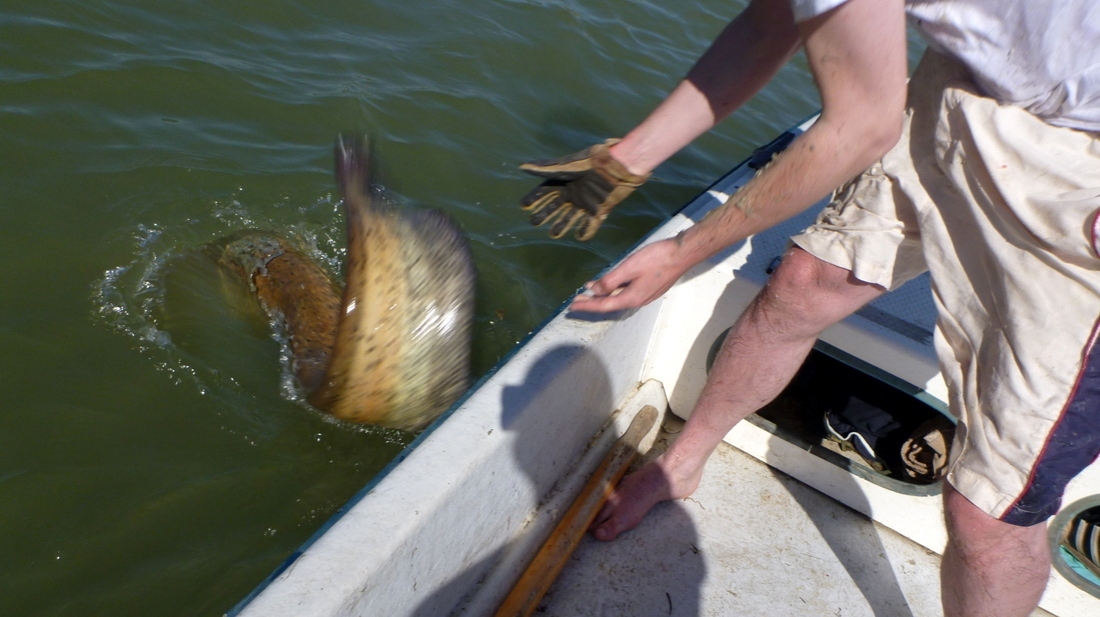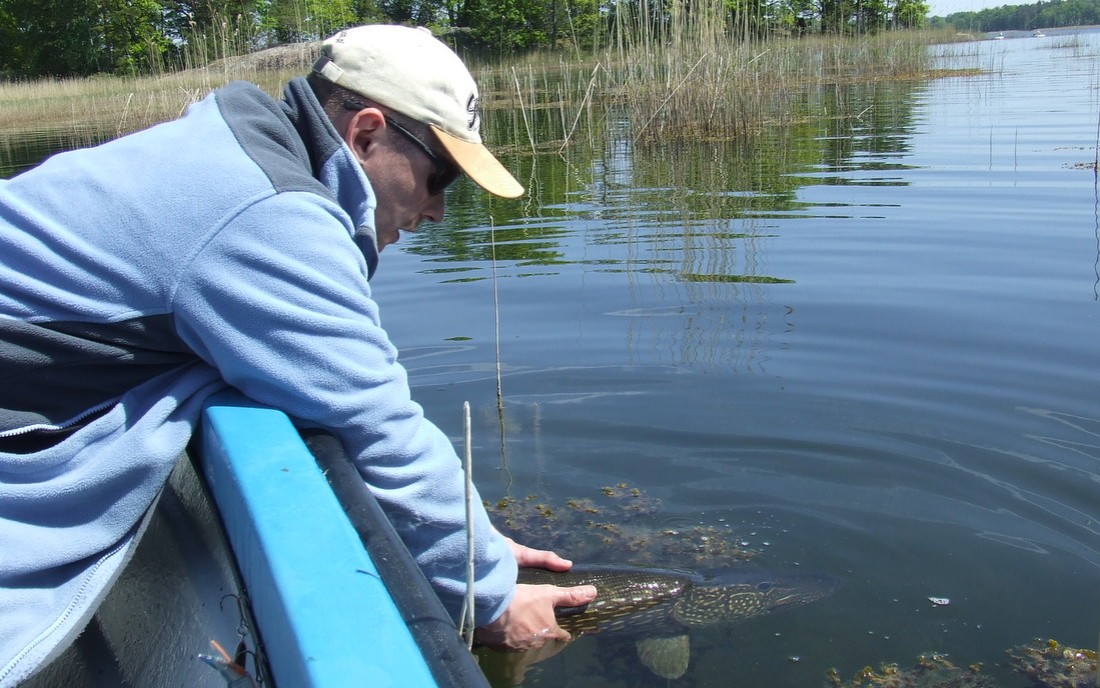The practice of catching a fish for sport, with rod and line, and then releasing it back to the water is known as Catch and Release. It has been discussed countless times in books, magazines, face to face conversations and on the Internet. Before writing this piece, I asked myself a question, “Does the world need another blog post about Catch and Release?”. My own approach to the practice has changed over time. That change has been due to personal experiences and to opinions expressed by respectable outdoorsmen. As a result, I decided to write about that change and hopefully challenge a few ossified opinions.
On many occasions, Catch and Release (C&R) is discussed from the perspective of an “ethical angler”. Proponents of the practice, quite often, unrelentingly criticize fellow anglers who take fish for the table. While I was certainly guilty of the latter, it was always my strong opinion, that C&R cannot stand on the grounds of ethics or morality. After all, we are sticking sharp hooks into a living creature and putting it through a torturous fight. Then, we remove the fish from the water and, while it is in a state of agony, we take photos of our grinning selves next to it. All that for our own enjoyment. Claiming moral high-ground for not killing it at the end is a bit hypocritical. C&R is purely a conservation measure, designed to protect fish as a renewable resource, while not completely denying anglers an opportunity to pursue their passion.
From the beginning of my journey as an angler, I could have been described as a hard-core C&R practicioner. It was because I realized that fish can be removed from the wild faster than they can reproduce. The evidence is easy to find. C&R was to me more of a matter of self interest than of ethics. I wanted to be sure that the fish would be there for my children and grandchildren. At that point in time, I refused to even consider killing a fish for any reason. And then… I was introduced to sea fishing.

Any discussion about sea fishing, commercial sea fishing in particular, and conservation measures can quickly get political. Since this article is aimed at recreational anglers I will skim over issues of overfishing and commercial exploitation of fish stocks. Let’s just say, that the number of fish removed from the sea by recreational anglers is miniscule compared to the amount taken by the commercial fleets of the economic powers of the world. Therefore, releasing a fish into the sea, from the perspective of conservation, is meaningless. In addition, many species of marine fish suffer from barotrauma, the injury caused by being pulled up to the surface from the depth of the ocean. This makes successful recovery of the fish, after it is released, doubtful. Given both facts, the responsible sea angler can either stop fishing altogether or keep the fish for consumption.
It is important to mention, that there are species of saltwater fish, like the european sea bass, which are particularly vulnerable even though they are not targeted by commercial fishermen. In such cases C&R still makes sense as a conservation measure.
After experience with offshore fishing and analysis of its place and impact my non-negotiable position on C&R was somewhat relaxed. A few years later, I put my hands on the book by a famous hunter, outdoorsman and environmentalist Steven Rinella. Although the book is a collection of hunting stories, it has a chapter dedicated to Catch and Release. To my surprise, this conservation minded author was not fond of C&R. That initially surprised me or maybe even made me a little bit angry. I even recorded an episode of the podcast reviewing the book. Spoiler alert: the review is largely very positive. After reflecting on what I read, I came to the conclusion that Steven might have a point. In his opinion, angling like hunting, was primarily a way to get food. As human hunter-gatherers became less dependant on hunting thanks to the invention of agriculture, the role of hunting and fishing started to shift. It is somewhat bizarre, according to him, that we still practice fishing but somehow try to distance ourselves from its original purpose. It has even become unacceptable to fish for certain species in certain ways!

Hunters, unlike anglers, don’t have an opportunity to “shoot and resurrect”. Every animal has to be dispatched as quickly and humanely as possible and the meat taken care of. Conservation measures are implemented by means of closed and open seasons. The number of animals that can be harvested, as well as the time and duration of open seasons for particular species of game, are decided based on scientific data. Factors like the carrying capacity of an area, the breeding capacity of particular species, food availability, the harshness of winters and the presence of predators are all taken into account. Application of these conservation principles to angling makes more sense to me. Especially because the mortality rate of fish caught and released can be significant.
In conclusion, it is my opinion that Catch and Release has its place in modern sport fishing. It is a useful conservation tool but it’s significance shouldn’t be overestimated. If the numbers of fish are dwindling, before we impose C&R we should first look at habitat issues and commercial exploitation. If an angler engages in C&R he must take extremely good care of the fish that he releases. Yes, that means no trophy photos, unhooking the fish while still in the water and using barbless hooks.
As an angler, I have arrived at the point where I am okay to stop fishing when I have reached my bag limit. If conservation of the fishery is a priority, there are better ways to tackle that problem. For example, working with authorities to establish sustainable bag limits and closed seasons based on scientific evidence. This will be much more beneficial for protecting fish stocks and ensuring that we can still enjoy the taste of a just caught, fresh fish.

One thought on “Catch and Release”